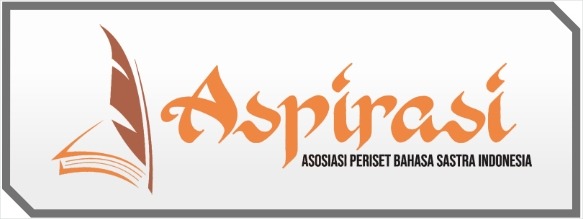Using Fables to Assist Students in Enhancing Their Reading Comprehension
DOI:
https://doi.org/10.61994/jee.v1i1.150Keywords:
Fables, Reading Comprehension, Narrative ParagraphAbstract
The main problem in this study was "Is it effective to teach reading comprehension by using fables to the eleventh-grade students at SMK Rawas Hulu?". The objective of this study is to find out whether or not teaching narrative text by using fables to eleventh-grade students at SMK Rawas Hulu is effective. The method used in this study was the quasi-experimental method. The population of this research was the eleventh-grade student at SMK Rawas Hulu in the academic year of 2022/2023. The population was 240 students, and 240 students were taken as samples, which were chosen through purposive sampling in the form of convenience sampling. The written test was used to collect the data and analysed through paired samples t-test. The result of this study proved that are the fables effective for teaching reading comprehension by using fables to the eleventh-grade students at SMK Rawas Hulu, it is proved by the degree of freedom (df) 33, sig with 2-tailed 0,000. T- obtained shows that the alternative hypothesis with 95% (0,05) of the significant level was accepted because the result of paired samples t-test was 3.088 which exceeded the t-table value was 2,042 as its critical value under 0,05 significant levels. Besides, the alpha value It (0,000) was less than 0,05. it indicated that the null hypothesis (Ho) was rejected and the alternative hypothesis (Ha) was accepted. It means that Teaching Reading Comprehension by Using Fables to The Eleventh Grade Students at SMK Rawas Hulu was effective.
References
Afflerbach, P., Cho, B. Y., Kim, J. Y., Crassas, M. E., & Doyle, B. (2013). Reading: What else matters besides strategies and skills?. The Reading Teacher, 66(6), 440-448.
Al-Jarrah, H., & Ismail, N. S. B. (2018). Reading comprehension difficulties among EFL learners in higher learning institutions. International Journal of English Linguistics, 8(7), 32-41.
Al-Odwan, T. A. A. H. (2012). The effect of the directed reading thinking activity through cooperative learning on English secondary stage students’ reading comprehension in Jordan. International Journal of Humanities and Social Science, 2(16), 138-151.
Alqarni, F. (2015). Collaborative strategic reading to enhance learners' reading comprehension in English as a foreign language. Academic Journal of Interdisciplinary Studies, 4(1), 161.
Amin, M. (2019). Developing reading skills through effective reading approaches. International Journal of Social Science and Humanities, 4(1), 35-40.
Andrés, I. C. (2020). Enhancing Reading Comprehension through an Intensive Reading Approach. HOW, 27(1), 69-82.
Barkley, E. F., & Major, C. H. (2020). Student engagement techniques: A handbook for college faculty. John Wiley & Sons.
Borins, S. (2011). Governing fables: Learning from public sector narratives. IAP.
Budiyanto, D. (2019). Using Peer Assisted Learning Strategy On Reading Comprehension Of Analytical Exposition. Jurnal Ilmiah Bina Edukasi, 12(01), 42-56.
Budiyanto, D., Tridinanti, G., Dianti, R., & Ridho, M. R. (2023). The Link Between VLS and Reading Comprehension. Global Expert: Jurnal Bahasa dan Sastra, 10(2), 23-29.
Celik, B. (2019). Developing writing skills through reading. International Journal of Social Sciences & Educational Studies, 6(1), 206-214.
Creswell, J. W. (2012). Educational Research: Planning, Conducting, and Evaluating Quantitative and Qualitative Research (4thed.) USA: Pearson Education, Inc.
Declerck, P., Danesi, R., Petersel, D., & Jacobs, I. (2017). The language of biosimilars: clarification, definitions, and regulatory aspects. Drugs, 77, 671-677.
Erkaya, O. R. (2011). Advantages of using translated stories from students’ native language to teach EFL. The Journal of Language Learning and Teaching, 1(2), 57-66.
Fraenkel, J. R, Wallen, N. E.,& Hyun, H. H. (2012). How to Design and Evaluate Research in Education (8thed.). New York: McGraw-Hill.
Frank, S. L., Bod, R., & Christiansen, M. H. (2012). How hierarchical is language use?. Proceedings of the Royal Society B: Biological Sciences, 279(1747), 4522-4531.
García-Madruga, J. A., Gómez-Veiga, I., & Vila, J. Ó. (2016). Executive functions and the improvement of thinking abilities: The intervention in reading comprehension. Frontiers in psychology, 7, 58.
Gilakjani, A. P., & Sabouri, N. B. (2016). How can students improve their reading comprehension skill. Journal of Studies in Education, 6(2), 229.
Hosseini, E., Khodaei, F. B., Sarfallah, S., & Dolatabadi, H. R. (2012). Exploring the relationship between critical thinking, reading comprehension and reading strategies of English university students. World Applied Sciences Journal, 17(10), 1356-1364.
Indriyani, V. (2017, October). The development teaching of writing fable text module with project based learning (PJBL) containing characters. In 2nd Annual International Seminar on Transformative Education and Educational Leadership (AISTEEL 2017) (pp. 20-25). Atlantis Press.
Karimi, L., & Veisi, F. (2016). The impact of teaching critical thinking skills on reading comprehension of Iranian intermediate EFL learners. Theory and Practice in Language Studies, 6(9), 1869.
Kim, T. K. (2015). T test as a parametric statistic. Korean journal of anesthesiology, 68(6), 540-546.
Landi, N. (2010). An examination of the relationship between reading comprehension, higher-level and lower-level reading sub-skills in adults. Reading and writing, 23(6), 701-717.
Leung, W. K., Shi, S., & Chow, W. S. (2020). Impacts of user interactions on trust development in C2C social commerce: The central role of reciprocity. Internet Research, 30(1), 335-356.
Nerim, N. (2020). Scrutinizing directed reading thinking activity (drta) strategy on students' reading comprehension. Journal of Languages and Language Teaching, 8(2), 128-138.
Oakhill, J., Cain, K., & Elbro, C. (2014). Understanding and teaching reading comprehension: A handbook. Routledge.
Oakhill, J., Cain, K., & Elbro, C. (2019). Reading comprehension and reading comprehension difficulties. Reading development and difficulties: Bridging the gap between research and practice, 83-115.
Oda, A. H., & Abdul-Kadhim, M. R. (2017). The relationship between gender and reading comprehension at college level. Journal of Basrah Research: The Humanities Sciences, 42(6), 426-442.
Piaw, C. Y. (2013). Mastering research statistics. Malaysia: McGraw Hill Education, New York, United States.
Rahmawati, I. N., Syafryadin, S., & Widiastuti, R. (2019). Teaching narrative writing using freaky fables game: An experimentation. English Education: Jurnal Tadris Bahasa Inggris, 12(2), 147-155.
Romdoni, U. (2020). Improving Students’ Reading Comprehension Skill Using Fable Story Text. JEET, Journal of English Education and Technology, 1(02), 135-153.
Rozi, M. A. F. (2018). Implementation of prophetic education in islamic boarding school (pesantren). EDUKASI: Jurnal Pendidikan Islam (e-Journal), 6(1), 140-161.
Ruhviyanti, N., Wasliman, I., Hanafiah, H., & Tejawiani, I. (2022). Implementation Of The Balanced Scorecard In Improving The Performance Of Private Universities. International Journal of Educational Research and Social Sciences (IJERSC), 3(3), 1242-1246.
Saalu, L. C., & Osinubi, A. A. (2022). Andropause (male menopause): valid concepts, fables and controversies. University of Lagos Journal of Basic Medical Sciences, 1(1).
Sari, D. P. (2016). An Analysis of Students’ Reading Comprehension Based on The Four Levels Comprehension Skills (A Study at The Second Year Students of SMAN 10 Bengkulu Academic Year 2014/2015). Linguists: Journal of Linguistics and Language Teaching, 3(1).
Spencer, M., Quinn, J. M., & Wagner, R. K. (2014). Specific reading comprehension disability: Major problem, myth, or misnomer?. Learning Disabilities Research & Practice, 29(1), 3-9.
Vidović, E., & Fajs, E. R. (2015). Teaching fables in the junior grades of primary school. Journal of Elementary Education, 8(1/2), 133-146.
Downloads
Published
Issue
Section
License
Copyright (c) 2023 Frian Saputra, Ari Kurniawati, Nurmala Dewi, Indri Nurhasanah, Berli Hartati

This work is licensed under a Creative Commons Attribution-ShareAlike 4.0 International License.

Journal of English Education by https://jurnal.dokicti.org/index.php/JCSS/index
is licensed under a Creative Commons Attribution-ShareAlike 4.0 International Licensel
















